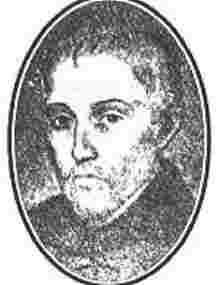Related Research Articles

Giovanni Pierluigi da Palestrina was an Italian composer of late Renaissance music. The central representative of the Roman School, with Orlande de Lassus and Tomás Luis de Victoria, Palestrina is considered the leading composer of late 16th-century Europe.
Jacobus Clemens non Papa was a Netherlandish composer of the Renaissance based for most of his life in Flanders. He was a prolific composer in many of the current styles, and was especially famous for his polyphonic settings of the psalms in Dutch known as the Souterliedekens.

Tomás Luis de Victoria was the most famous Spanish composer of the Renaissance. He stands with Giovanni Pierluigi da Palestrina and Orlande de Lassus as among the principal composers of the late Renaissance, and was "admired above all for the intensity of some of his motets and of his Offices for the Dead and for Holy Week". His surviving oeuvre, unlike that of his colleagues, is almost exclusively sacred and polyphonic vocal music, set to Latin texts. As a Catholic priest, as well as an accomplished organist and singer, his career spanned both Spain and Italy. However, he preferred the life of a composer to that of a performer.
Marc'Antonio Ingegneri was an Italian composer of the late Renaissance. He was born in Verona and died in Cremona. Even though he spent most of his life working in northern Italy, because of his stylistic similarity to Palestrina he is often considered to be a member of the Roman School of polyphonic church music. He is also famous as the teacher of Claudio Monteverdi.
Peter Philips was an eminent English composer, organist, and Catholic priest exiled to Flanders. He was one of the greatest keyboard virtuosos of his time, and transcribed or arranged several Italian motets and madrigals by such composers as Lassus, Palestrina, and Giulio Caccini for his instruments. Some of his keyboard works are found in the Fitzwilliam Virginal Book. Philips also wrote many sacred choral works.
Rinaldo del Mel was a Franco-Flemish composer of the Renaissance, mainly active in Italy, and a member of the Roman School of composition. He likely studied with Palestrina, and was a skilled and prolific composer, especially of cyclic madrigals of the type popular in Rome.
William Smith was an English composer from the city of Durham. He is chiefly known for his set of choral preces and responses for the Anglican liturgy of Evening Prayer.
The decade of the 1520s in music involved some significant events, compositions, publications, births, and deaths.
The decade of the 1530s in music involved some significant events, publications, compositions, births, and deaths.
The decade of the 1540s in music involved some significant events.
Pedro de Soto (1493-1563) was a Spanish Dominican theologian.
References
- Brennecke, Wilfred. "Kerle, Jacobus de". Grove Online. Accessed May 5, 2007.
- Leitmeir, Christian Thomas. "Jacobus de Kerle (1531/32-1591): Komponieren im Brennpunkt von Kirche und Kunst" (Turnhout: Brepols, 2009)(= Collection Épitome musical, 11)
- ↑ Patrick Bergin Jr. (2009). Preces speciales: Prototype of Tridentine Musical Reform, OSOM Volume 2.